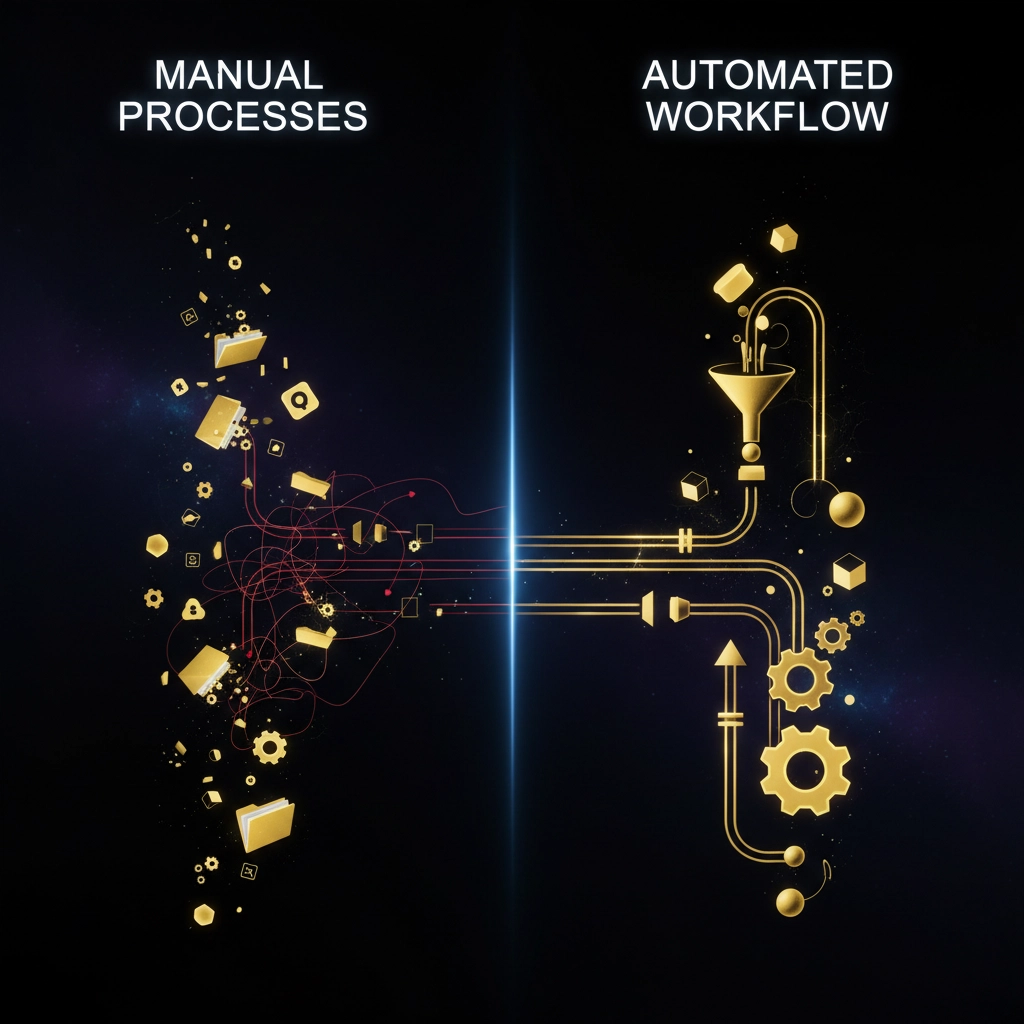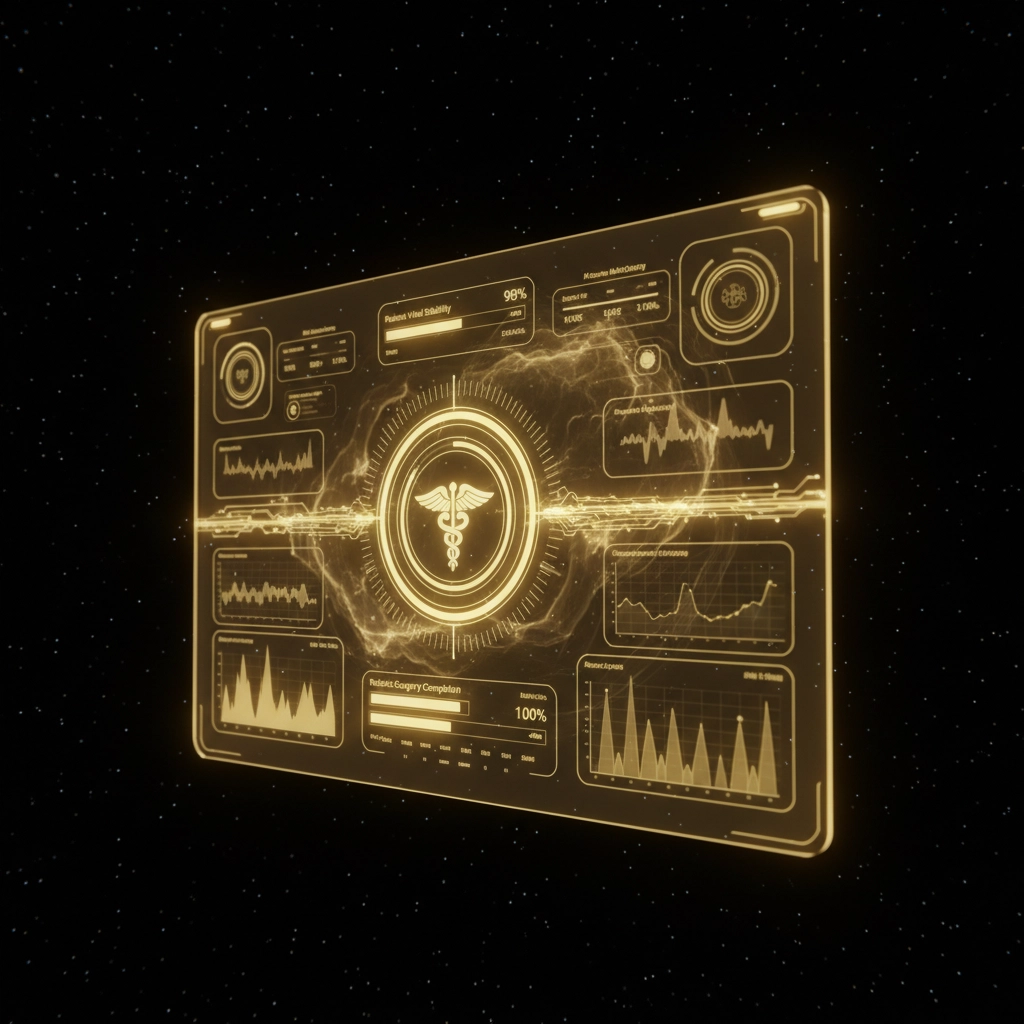How to Automate Your Biggest Growth Bottlenecks in 90 Days (Without Hiring Anyone)
Growing a HealthTech or wellness startup feels like juggling flaming torches while riding a unicycle. You're constantly switching between patient onboarding, provider communications, compliance tracking, and trying to actually grow your business. The good news? You don't need to hire a team of ten to scale efficiently. You need smart automation.
I've seen countless wellness startups burn through runway hiring for tasks that could be automated in a weekend. One of our clients at Solsti.ai recently automated 60% of their patient intake process and freed up 15 hours per week: without writing a single line of code or hiring anyone new.
Here's exactly how to identify and automate your biggest growth bottlenecks in the next 90 days.
Why HealthTech Startups Hit Automation Walls
HealthTech companies face unique challenges that make automation both crucial and tricky. You're dealing with sensitive patient data, complex regulatory requirements, and workflows that seem too nuanced for "simple" automation tools.
The reality is different. Most of your bottlenecks aren't actually the complex, creative parts of your business. They're the repetitive tasks that eat up your time: appointment scheduling, follow-up emails, data entry, patient reminders, and basic customer support queries.
According to recent industry data, healthcare entrepreneurs spend 40-50% of their time on administrative tasks that could be automated. That's literally half your workweek that could be redirected toward product development, strategic partnerships, or fundraising.

The 90-Day HealthTech Automation Blueprint
Days 1-30: Foundation Phase - Quick Wins That Build Momentum
Start with your most painful, time-consuming task. For most HealthTech startups, this is usually patient communication or appointment management.
Week 1-2: Audit Your Current Workflows
Map out every repetitive task you do in a typical week. Use a simple spreadsheet or tool like Notion to track:
- How often you do each task
- How long it takes
- Whether it requires creative thinking or just following rules
- The potential impact if it were automated
Week 3-4: Implement Your First Automation
Choose one workflow with clear, predictable steps. Popular starting points include:
- Appointment confirmations and reminders: Tools like Calendly or Acuity can handle scheduling, confirmations, and no-show follow-ups automatically
- New patient welcome sequences: Set up email automation to deliver intake forms, educational content, and onboarding materials
- Basic customer support: Create chatbots using tools like Intercom or Zendesk to handle common questions about services, pricing, or account issues
One wellness startup I worked with automated their entire new client onboarding sequence in two weeks. Instead of manually sending intake forms, scheduling calls, and following up on missing information, they created a system that does it all automatically. Result? They onboarded 3x more clients with the same effort.
Days 31-60: Sales and Patient Acquisition Systems
This phase focuses on building automated systems that find, qualify, and nurture potential patients or clients.
Lead Generation Automation
Set up systems that capture leads from multiple sources and automatically route them to the right place:
- Website forms that trigger personalized email sequences
- Social media ads that feed directly into your CRM
- Webinar or content downloads that automatically segment leads based on interests
Patient Nurturing Sequences
Create automated email campaigns that educate potential patients about your services. For example, someone who downloads your "Guide to Telehealth" gets a different email sequence than someone who signs up for a free consultation.
Provider Communication Workflows
If you work with healthcare providers, automate the referral and communication process. Set up workflows that notify providers when patients complete certain actions, automatically generate progress reports, or send periodic updates about patient outcomes.

Days 61-90: Advanced Integration and Optimization
By now, you should have several automated workflows running. This phase focuses on connecting these systems and optimizing based on real data.
System Integration
Connect your various tools so they work together seamlessly:
- Link your CRM with your scheduling software
- Connect patient management systems with billing platforms
- Integrate marketing automation with customer support tools
Advanced Workflows
Implement more sophisticated automation:
- Dynamic content that changes based on patient history or preferences
- Automated patient outcome tracking and reporting
- Predictive analytics that identify patients at risk of churning
Data-Driven Optimization
Use the data you've collected to refine your automations. Which email sequences have the highest open rates? What automated messages lead to the most bookings? Continuously test and improve your systems.
Essential Tools for HealthTech Automation
HIPAA-Compliant Communication Platforms
Tools like SimplePractice, TherapyNotes, or TheraNest offer built-in automation features designed specifically for healthcare businesses. They handle patient communications, scheduling, and basic administrative tasks while maintaining compliance.
No-Code Automation Builders
Zapier and Make.com can connect hundreds of apps without requiring technical expertise. Create workflows like "When someone books an appointment, add them to our CRM, send a welcome email, and create a Slack notification."
CRM with Healthcare Focus
Platforms like HubSpot (with healthcare-specific configurations) or specialized tools like Salesforce Health Cloud can automate lead scoring, follow-up sequences, and patient journey mapping.
Scheduling and Communication
Calendly, Acuity Scheduling, or BookFunnel can handle appointment booking, confirmations, reminders, and rescheduling without any manual intervention.

Measuring Automation Success in HealthTech
Track metrics that matter for healthcare businesses:
Time Savings: Measure hours saved per week on administrative tasks. Our clients typically see 15-25 hour weekly savings after implementing basic automation.
Patient Experience Metrics: Monitor response times, no-show rates, and patient satisfaction scores. Automation often improves these metrics by providing more consistent, timely communication.
Conversion Rates: Track how automation affects your funnel. Automated follow-up sequences typically improve lead-to-patient conversion rates by 20-40%.
Compliance and Error Reduction: Automated systems reduce human error in data entry, appointment scheduling, and patient communications.
HealthTech-Specific Automation Examples
Telehealth Workflow Automation
Automatically send pre-visit instructions, technical setup guides, and post-visit follow-ups. Create workflows that handle insurance verification, prescription management, and care plan delivery.
Patient Monitoring and Follow-Up
Set up automated check-ins for chronic care patients, medication adherence reminders, and escalation protocols for patients who miss important follow-ups.
Provider Network Management
Automate onboarding for new healthcare providers, credentialing reminders, and performance reporting. Create workflows that handle referral tracking and provider communication.

Common Automation Pitfalls to Avoid
Over-Automating Personal Interactions
Don't automate everything. Maintain human touchpoints for complex medical discussions, emotional support, or situations requiring clinical judgment.
Ignoring Compliance Requirements
Ensure all automated communications and data handling meet HIPAA and other regulatory requirements. Work with compliance experts to review your automated workflows.
Setting and Forgetting
Automation requires ongoing monitoring and optimization. Schedule weekly reviews to check system performance and patient feedback.
Poor Integration Planning
Choose tools that integrate well with your existing systems. Having ten different automation tools that don't talk to each other creates more work, not less.
The Compound Effect of HealthTech Automation
The magic happens when your automated systems start working together. A potential patient visits your website, downloads a resource, receives automated educational emails, books a consultation through your automated scheduler, gets reminder messages, completes automated intake forms, and receives follow-up care instructions: all without manual intervention.
This creates a scalable, consistent experience that would be impossible to deliver manually as you grow. More importantly, it frees up your time for the high-value activities that actually require your expertise: developing better treatment protocols, building provider relationships, or securing funding for expansion.
The 90-day timeline isn't arbitrary: it's the sweet spot where you can see meaningful results without overwhelming yourself or your systems. Start simple, build momentum with quick wins, then expand into more sophisticated automation as you gain confidence and see results.
Remember, the goal isn't to remove the human element from healthcare. It's to remove the repetitive tasks that prevent you from focusing on what matters most: improving patient outcomes and growing your business.
